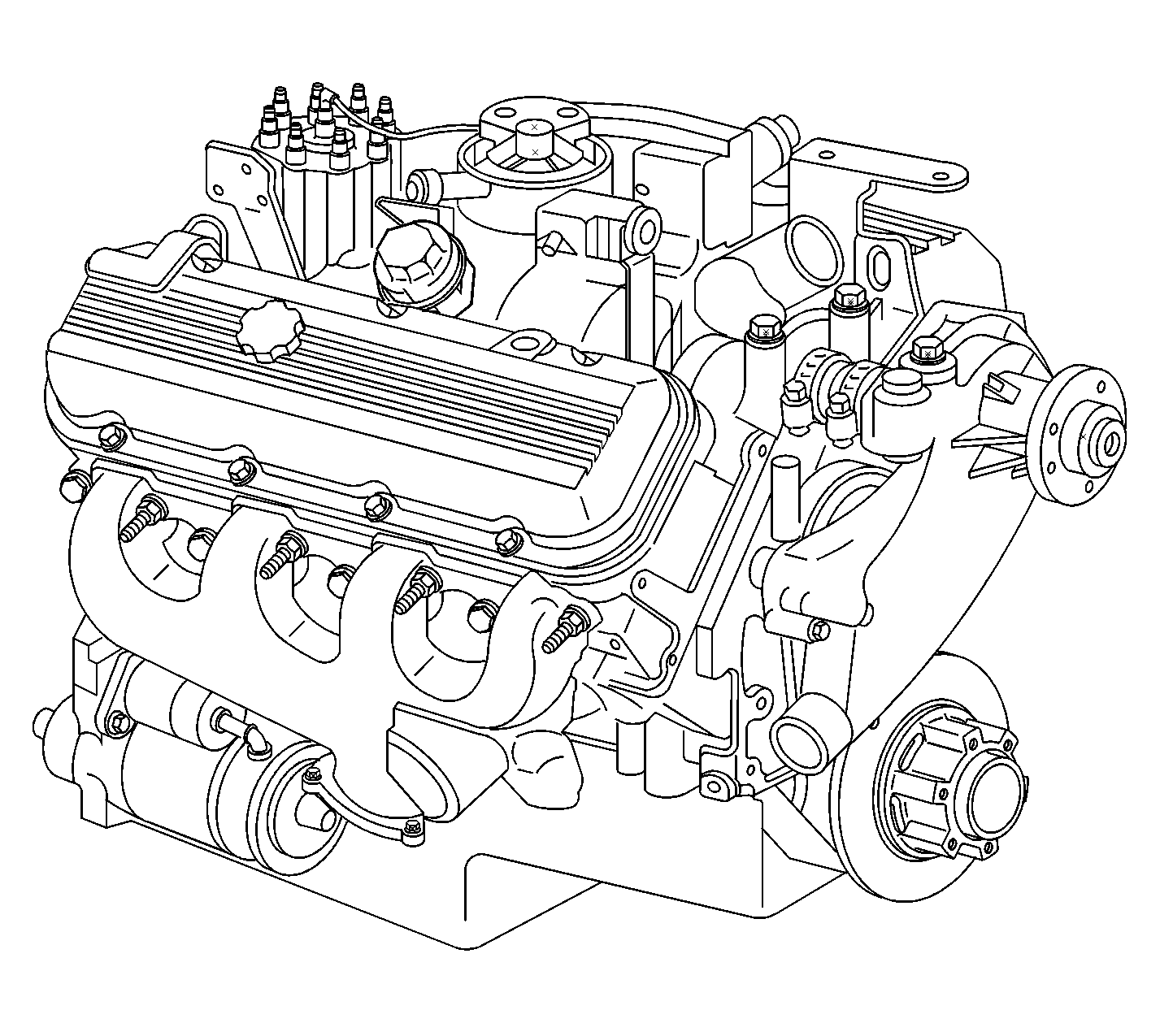
Cylinder Block
The engine block is made of cast iron and it has eight cylinders arranged in a V shape with four cylinders in each bank. The cylinder block is a one piece casting with the cylinders encircled by coolant jackets.
Cylinder Head
The cylinder heads are cast iron and have parent metal inlet valve guides and inlet valve seats. Cast iron exhaust valve guides and powdered metal valve seats are pressed into the exhaust ports. A spark plug is located between the valves in the side of the cylinder head.
Camshaft
A steel camshaft is supported by five bearings pressed into the engine block. The camshaft sprocket, mounted to the front of the camshaft, is driven by the crankshaft sprocket through a camshaft timing chain.
Motion from the camshaft is transmitted to the valves by hydraulic lifters, valve pushrods, and ball-pivot type rocker arms. A spiral gear machined into the camshaft near the rear journal drives a shaft assembly which operates the oil pump driveshaft assembly.
Crankshaft
The crankshaft is made of cast nodular iron. The crankshaft is supported by five crankshaft bearings. The crankshaft bearings are retained by the crankshaft bearing caps, which are machined with the block for proper alignment and clearance. The engine crankshaft bearing caps are retained by four bolts each. The number five crankshaft bearing at the rear of the engine is the end thrust bearing. The four connecting rod journals (two rods per journal) are spaced 90 degrees apart.
Pistons and Connecting Rods
The pistons are cast aluminum alloy that use three compression rings and one oil control ring assembly. The piston pins are a floating fit in the pistons and they are retained by a press fit in the connecting rod assembly. Connecting rods are forged steel, with precision insert type crankpin bearings.
Valve Train
The valve train is a ball pivot type. Motion is transmitted from the camshaft through the hydraulic lifters and tubular valve pushrods to the valve rocker arms. The valve rocker arm pivots on a ball to open the valve. The hydraulic lifters keep all parts of the valve train in constant contact. Each lifter act as an automatic adjuster and maintains zero lash in the valve train. This eliminates the need for periodic valve adjustment. The valve rocker arm bolt retains the valve rocker arm and ball seat. The valve rocker arm bolt is threaded into the cylinder head.
Intake Manifold
The intake manifold is a one-piece design and is made of cast aluminum. The throttle body is attached to the intake manifold. A linear EGR port is cast into the upper intake manifold for exhaust gas recirculation mixture.
Exhaust Manifold
The two exhaust manifolds are constructed of cast iron. The manifolds direct exhaust gases from the combustion chambers to the exhaust system. The manifolds have a threaded port for EGR inlet system pipe fittings. Some manifolds have a threaded port for AIR pipe connections.
